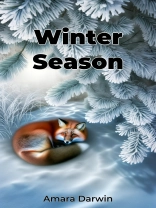‚Winter Season‘ offers a fascinating exploration of how life adapts and persists during the coldest months, presenting a comprehensive examination of winter survival mechanisms across plants, animals, and humans. The book masterfully weaves together research from ecology, biology, and environmental science to reveal the sophisticated adaptations that have evolved over millions of years, from the chemical processes behind plant dormancy to the varied hibernation strategies of mammals.
Through three main themes – biological adaptation, ecological interconnection, and environmental impact – the text progresses from fundamental concepts to complex interactions. Readers discover intriguing phenomena such as how deciduous trees prepare for winter by breaking down chlorophyll and storing nutrients, and how bears maintain awareness during torpor while conserving energy. The book particularly shines in its detailed exploration of supercooling in plants and thermogenesis in mammals, supported by long-term studies and data from various climate zones.
What sets this work apart is its methodical approach to connecting biology, chemistry, and physics in winter survival mechanisms, while remaining accessible to educated general readers. The inclusion of practical applications for wildlife conservation and agricultural planning makes it especially valuable for students, environmental scientists, and nature enthusiasts. Moreover, the book addresses crucial contemporary issues, examining how climate change affects traditional winter patterns and what this means for species adaptation in temperate and polar regions.












